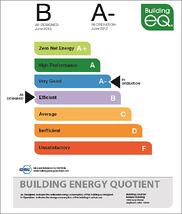Note: Since this was article was originally posted, a budget passed Congress that does not significantly reduce EPA funding. So we believe the Energy Star Program is safe - for now. It’s good to know, however, what else is out there from the private sector, for example, ASHRAE bEQ as is discussed below. Our industry needs to be well-versed in all the options, not on a just-in-case basis, but on a what’s-best-for-the-customer basis. (updated 5/10/2017)
Since its inception in 1992, the Energy Star label has gained tremendous popularity, and today thousands of products (mostly small and medium home appliances) sport the Energy Star logo. Use of this program, run by the US Environmental Protection Agency (EPA) in partnership with the US Department of Energy (DOE), had saved $362 billion on energy bills and prevented nearly 2.5 billion tons of greenhouse gases from being released into the atmosphere. If this program goes away, as is being proposed by the current administration, we risk losing many of the gains that have been made.
An even greater risk is the potential loss of the Energy Star Portfolio Manager (ESPM), a well-known and widely used program for comparing energy use among existing buildings. Building owners and managers use E SPM to see how well their building performs with regards to energy use, and then rates it on a 1-100 scale against buildings of similar size and in similar climates. As an Energy Star Partner, Newman Consulting Group uses the ESPM on many of our energy efficiency improvement projects.
 The ESPM helps facility managers and building engineers know whether they have room for improvement but the building team must mine that information to help them determine which improvements to make. An Energy Star rating also informs potential tenants and prospective buyers whether the building uses energy resources efficiently and puts a number on it. Buildings with a score of 75 or better are shown to be more efficient than 75% of buildings of similar size and climate and they are allowed to display the Energy Star blue label.
The ESPM helps facility managers and building engineers know whether they have room for improvement but the building team must mine that information to help them determine which improvements to make. An Energy Star rating also informs potential tenants and prospective buyers whether the building uses energy resources efficiently and puts a number on it. Buildings with a score of 75 or better are shown to be more efficient than 75% of buildings of similar size and climate and they are allowed to display the Energy Star blue label.
The ASHRAE Building Energy Quotient (bEQ) labeling program, launched just four short years ago, provides clear, easy-to-use labels and language to inform the building owner, manager, tenant or potential buyer about a building’s performance. The bEQ label requires a more thorough building energy analysis beyond an ASHRAE Level 1 Audit, and it includes an Indoor Environmental Quality Survey (IEQ) as well. These comprehensive tools identify opportunities for both energy and air quality improvement along with the costs associated with those improvements. This kind of reporting gives an owner the information needed to make decisions about the cost-effectiveness of the recommended solutions. 
The bEQ program emphasizes understanding energy use and identifying the specific areas for improvement, such as HVAC, lighting, building envelope, plug loads, water use and more. The Energy Star PM tool solely records energy usage and assigns a number value. bEQ’s simplified rating system and colorful label show owners and tenants how their building’s Energy Use Index compares to similar buildings.
The bEQ label program also has tools to inform an engineer, whether they are designing a new building or designing a major retrofit, how the design will work in terms of energy use and IEQ even before the construction is completed. See ASHRAE bEQ Updates. In contrast buildings must be in operation for a minimum of 12 months before they can qualify for an Energy Star rating.
Is it more expensive than Energy Star? Yes it is – because it does so much more. Will it take a while for people to get used to it? Of course it will. It took the building industry and DOE/EPA close to 10 years to realize that Energy Star could be used for more than just appliances – and DOE is a whole lot larger than ASHRAE.
Can bEQ be utilized if the Energy Star Portfolio Manager continues? Absolutely. And it should be because it provides so much valuable, actionable information.
Can bEQ be used if Energy Star goes away? Definitely.
If you are concerned about losing Energy Star Portfolio Manager, you need to contact your representatives in Congress and encourage them to keep ESPM around.



